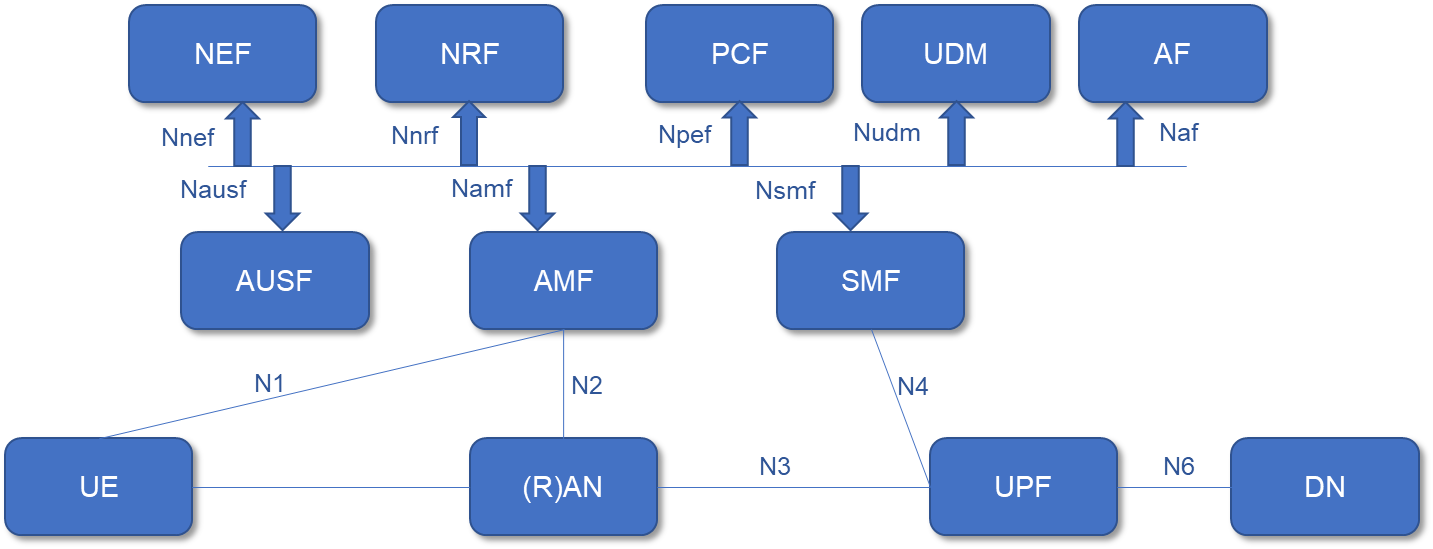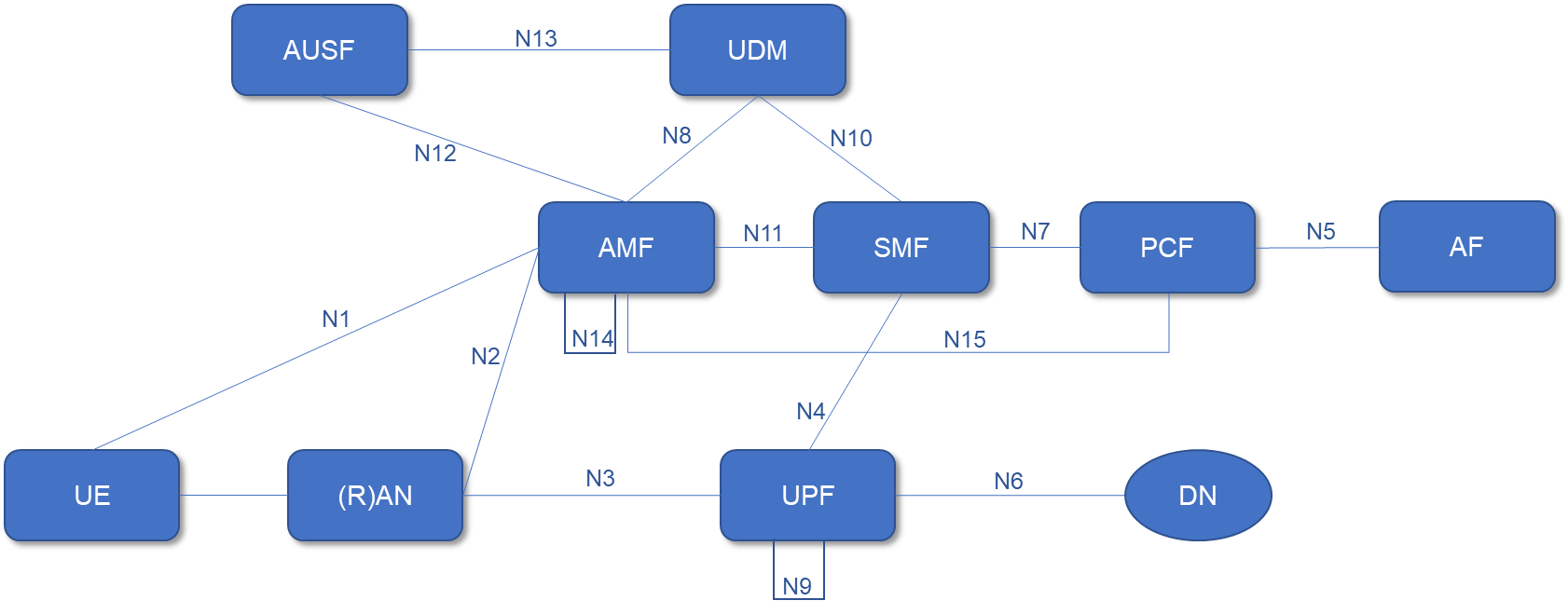
The 5G System (5GS) will have three main components as defined below:
- 5G Access Network (5G-AN)
- 5G Core Network (5GC)
- Use Equipment (UE)
This blog is dedicated to describing the main components of the 5G Core Network as defined by the ongoing efforts at 3GPP SA [1].
The 5G system is being designed to support data connectivity and services which would enable deployment, by the industry, using new techniques such as Network Function Virtualization and Software Defined Networking. The need for these new techniques rises due to the various different profiles of data services that need to be supported by the 5G network. So far mobile networks had been designed keeping the average smartphone user in the center but with 5G this is changing as with the boom of data connectivity various use cases having completely different data requirements have come up and the network operator needs to satisfy all these requirements as efficiently as possible.
Having such requirements in mind the 3GPP has kept the basic idea of having a flat architecture where the Control Plane (CP) functions are separated from the User Plane (UP) in order to make them scaling independent allowing operators to use this functional split for dimensioning, deploying and adapting the network to their needs easily. Another central idea in the design of 5G has been to minimize dependencies between the Access Network (AN) and the Core Network (CN) with a converged access-agnostic core network with a common AN – CN interface which integrates different 3GPP and non-3GPP access types.
Network Functions of 5G Core Network
In order to facilitate the enablement of different data services and requirements the elements of the 5GC, also called Network Functions, have been further simplified with most of them being software based so that they could be adapted according to need. The 5G System architecture consists of the following network functions (NF) majority of which constitute the 5GC:
- Authentication Server Function (AUSF)
- Core Access and Mobility Management Function (AMF)
- Data network (DN), e.g. operator services, Internet access or 3rd party services
- Structured Data Storage network function (SDSF)
- Unstructured Data Storage network function (UDSF)
- Network Exposure Function (NEF)
- NF Repository Function (NRF)
- Policy Control function (PCF)
- Session Management Function (SMF)
- Unified Data Management (UDM)
- User plane Function (UPF)
- Application Function (AF)
- User Equipment (UE)
- (Radio) Access Network ((R)AN)
The modularity of the network functions also opens up the possibility to enable another new and efficient feature i.e. Network Slicing.
The interaction between network functions in the current form is envisaged in the following two ways as per [1]:
- The first method is the service-based representation in which one network function (e.g. AMF) within the Control Plane allows other network functions, which have been authorised, to access its services. This representation also includes point-to-point reference points between the NFs where necessary (see figure 1).

Figure 1: 5G System Service-based architecture [1]
- On the other hand is the reference point representation which focuses on the interactions between pairs of network functions defined by point-to-point reference point (e.g. N7) between any two network functions (e.g. SMF and PCF). This kind of representation is used when some interaction exists between any two network functions (see figure 2).

Figure 2: Non-Roaming 5G System Architecture in reference point representation [1]
Summary
With the development of 5G speeding up1, we can see a clearer picture of what the future generation wireless network would like to be able to achieve. The 5G core network aims to be flexible enough to adapt and satisfy the needs for Gbps seeking smartphone users as well as low latency seeking critical services along with low speed IoT devices. It is also being designed to be more open and modular than its predecessor allowing the different entities inside the core network to interact with each other without any preconditions and allowing to define procedures for this interaction. And this would be achieved with the help of new techniques like Network Function Virtualization, Network Slicing, and Software Defined Networking2 etc.
References
[1] 3GPP TS 23.501 V0.4.0 (2017-04)
¹ The evolution to 5G and the progress so far has been discussed in the following post: 3GPP Release-15: Further LTE Enhancements and 5G Normative Work Kick-off
² Read about the key technologies creating all the buzz around 5G in our blog post: 5G Trends









Hi Marcin,
Good Morning, I am a telecom software engineer from Bangalore, India. I work at R&D for IMS, LTE and VoLTE domains.
I would like to know more about 5G technologies, which is the path forward in telecom.
Also, I would like to know, what would be the IMS signaling path in 5G.
Thanks,
Manoj
Hi Manoj,
thanks for your message.
To get a knowledge on the 5G aspects, I recommend you to go to an online video course, entitled: “Towards 5G: Research and Standardization” from 5G-Courses.com for which we have contributed with technical insights: https://www.5g-academy.org/courses/towards-5g-online-course
You can use a promocode: GRANDMETRIC to get a 25% discount.
Best,
Marcin